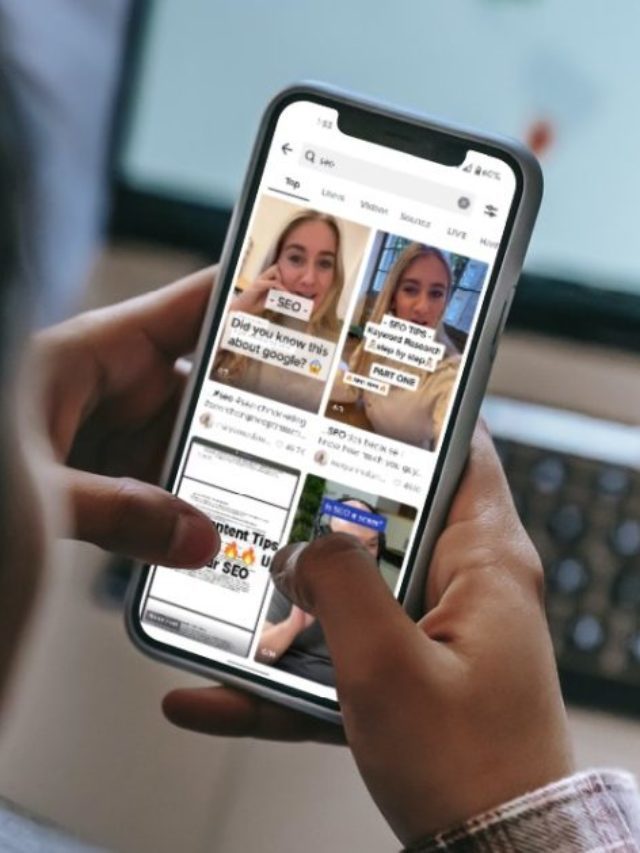How BookTok Trends Are Affecting the Bookselling and Publishing Industries
“Et tu Brute?” Yes, us too. Like every other book lover and TikTok user, we cannot help but take notice of the unprecedented relationship happening between BookTok and the bookselling and publishing industries. Rising to prominence in 2020, the year of the plague, BookTok quickly established itself as a key player in the digital marketing trends of the literary community. What originally started as a series of videos to discuss and recommend books, turned into a marketing phenomenon like no other.
Drawn to the organic nature of BookTok, many users feel that the community has democratized the book industry, handing control over to the readers, rather than the faceless publishers and agents of the literary world. If this is true, then the readers of BookTok have been very busy indeed. As engagement within the community continues to grow, BookTok recommendations appear in every major bookstore and on every bestseller list. Now arguably one of the largest subcultures of TikTok, BookTok has drastically changed the way that we view bookselling and marketing.

What is BookTok?
Before we take a closer look at the effect BookTok has had on bookselling and publishing trends, we should probably start with a quick explanation of what BookTok is, and why BookTok trends are relevant.
BookTok is a literary subcommunity of the social app TikTok—a short-form video platform. Creators from this community are called BookTokers, and they range from readers and authors to publishers, literary agents, graphic designers, etc. BookTok content varies, but is largely made up of book recommendations and reviews. Users may also post book hauls, challenges, giveaways, and advertisements. Unlike other social media platforms, such as Twitter or Instagram, Tiktok’s algorithm is designed to reach more than just a user’s current follower base, connecting you with a large scope of creators and users that are interested in the same content as you. In BookTok’s case, this content is obviously books and book-related topics, such as literary genres, tropes, theory, etc.; all of which appear on TikTok’s curated “For You” page (FYP) and in a number of BookTok hashtags.
Why are BookTok Trends Relevant?
BookTok has been credited with creating the next wave of reader-author relationships, introducing readers and authors who might not have otherwise met or engaged with one another. Bypassing the traditional modes of communication, these groups speak and interact with each other directly through the app, sharing news, recommendations, and most importantly, books!
This subcommuniy has gotten people excited about reading again, and their influence can be seen throughout the literary and social media marketing communities. Whether it’s introducing older titles to new readers, helping young authors find their target audience, or moderating the next hardcover versus paperback debate, BookTok is well-placed to continue serving its vast audience of bibliophiles
BookTok continues to grow and is one of the most successful subcommunities on TikTok. As of August 2022, the hashtag #BookTok has 67.7B views, while #BookTokChallenge and #booktokreccomendations have 127.1M and 60.9M views, respectively.1
How has BookTok influenced the bookselling and publishing industries?
So, now that we understand why BookTok has been appearing all over your digital feed and TikTok FYP, how exactly has BookTok been influencing bookselling and publishing trends? Well, the answer to that question comes in a few different forms. The first and most obvious answer being that the more readers talk about a book, the more viewers tend to go out and purchase that book. Even books that were published nearly a decade before BookTok began, such as Madeline Miller’s Song of Achilles (2011), can now be seen climbing the New York Times Bestseller list and selling out in bookstores. Not only do these books sell out, but many of them are also being rereleased in new covers or editions, signed to movie and TV adaptations, and getting long awaited sequels or continuations of their series. The authors of these books are experiencing similar changes, and many small or independent writers are suddenly being signed to large publishing houses, while established authors are releasing books at a much quicker rate. For example, since being released and gaining popularity on BookTok in 2020, Jennifer Armentrout’s paranormal romance series, Blood and Ash, has seen not one, not two, but three additions to the series over the last two years. That release rate may not seem that impressive on its own, but many authors take 1-2 years to write even the second book of a series. As the BookTok demand for content grows, so does the rate at which we see these books on shelves.
Furthermore, BookTok is directly responsible for several internal changes in the bookselling and publishing world. Large book retailers, like Barnes & Noble and Booksamillion, have begun creating specialized shelves and displays for books that are popular on BookTok, and have even dedicated entire categories of their websites to BookTok selections and trends. Shannon Devito, Director of Books at Barnes & Noble, says, “We’re identifying these trends as big opportunities” and notes the ways in which almost every B&N location has altered their marketing strategy to reflect this growing interest in BookTok picks.2
Publishers are also now considering BookTok a serious promotional tool, and have begun to utilize the various literary networks created through the platform. Notable publishing companies, such as Penguin Books, have made TikTok accounts and regularly interact with Booktok content and creators. Likewise, publishers are working with their authors on the app to create more organic content, targeted campaigns, and BookTok-influencer collaborations.3
What Does the Digital Marketing Future Look Like for BookTok?
So, what do all of these BookTok trends mean for the world of digital marketing? Can we trust BookTok creators with our libraries, or is this type of network encouraging false or lukewarm content? As consumers, how do we know that these quickly rising books and authors are deserving of our time and money?
Our Social Media Director and fellow BookToker, Meara McNitt, has made several TikToks on this topic. In one video, she says, “Something for me that would help bridge this gap is if these authors worked with BookTok creators. Give some people some samples, and let them verify your work to the crowd. We’re here to help you read books and get sales.” Like Meara, most BookTokers see the platform as a space for industry collaboration—a network where consumer input is valued and implemented. Readers get to support works that they love, while also ensuring that their voices/concerns are heard.
BookTok has been championed for its accessibility, allowing readers and authors to communicate without the need for a bookseller or publisher to serve as the middleman. Yet, how do we continue this momentum without losing any of the quality of our favorite reads? Going forward, the bookselling and publishing industries, including the authors that reside inside them, will have to invest more resources in Booktok, particularly the creators that facilitate these literary discussions and movements. In the same vein, BookTokers will have to accept that some of these larger literary institutions still hold sway over the book community and are needed if we want to make significant changes to the author-to-reader funnel. This collaboration will likely include many variables and false starts, but what an exciting time in the world of books!
Want to learn more about BookTok and Digital Marketing Trends?
At Online Optimism, we strive to stay up-to-date on the most exciting digital trends, providing our users with updated and informative content. Sign up for our newsletter below to get that information first hand in your inbox, or subscribe to our podcast (if you’re more of a listener than a reader)!

